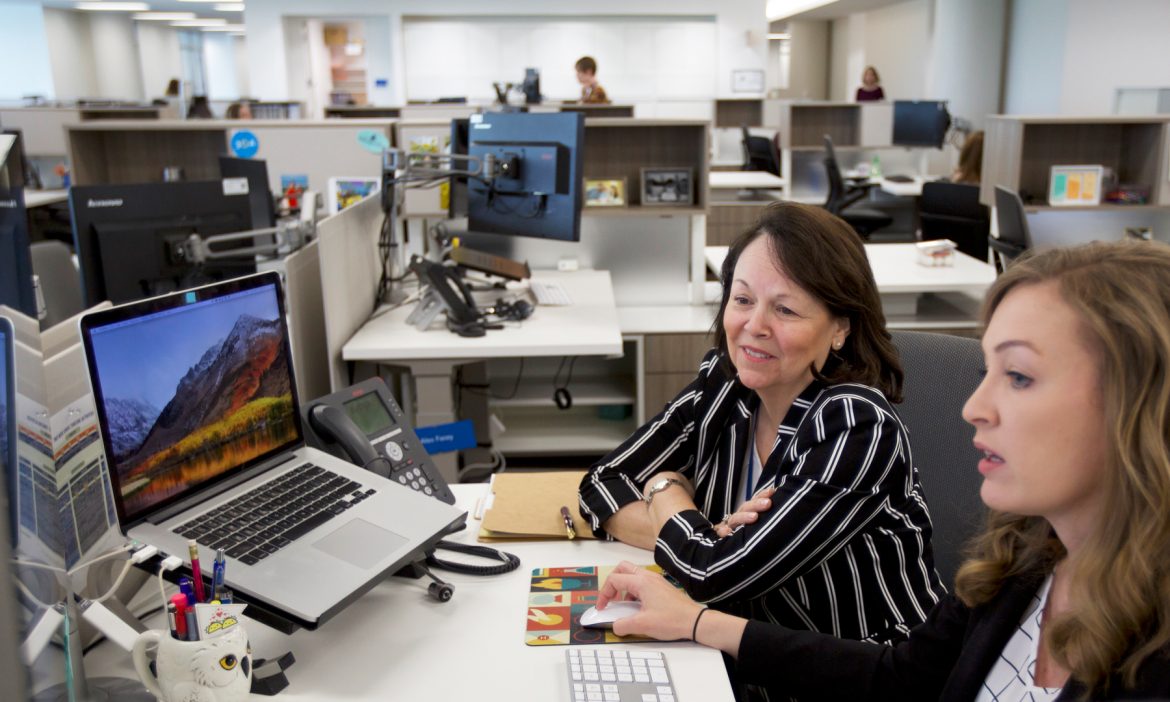Originally published in The Tennessean, April 2019
You’ve probably heard some version of the saying, “Culture beats strategy.” At many high-performing companies, the two go hand in hand.
Combining the two is essential for long-term success, but culture has a stronger impact on recruiting and hiring. And it can be a differentiator in today’s competitive talent market, even beyond the recruiting phase.
Culture can improve – or detract from – productivity. For example, Gartner reported in March that just 14% of global workers report a high level of discretionary effort.
At BlueCross, though, 86% of our employees say their co-workers “are willing to go beyond what is expected” for our members. Why? Because our people believe in our mission to serve – and 98% understand how their daily work supports it.

Here’s some of what we’ve learned about fostering engagement in a culture that values open communication.
First, employees need to hear directly from senior leaders – and be able to speak directly, asking questions and offering ideas.
Like many companies, we offer our people the opportunity to share confidential feedback each year through an employee engagement survey. Each year, roughly 90% of BlueCross employees take us up on the offer, sharing opinions about our work environment, our leadership team and collaborating with their peers.
We get more than 10,000 comments, and I read every single one of them – as do our CEO and COO.
We’ve consistently beaten national benchmarks for several key metrics, including whether our employees understand their role in our strategy and the level of trust they hold in our leadership team. But we saw more opportunities to expand on our commitment to open dialogue.
How our efforts evolved
Several years ago, senior leaders began hosting a series of town hall meetings each fall to talk culture and take questions and ideas from employees. Between engagement survey feedback and these culture-oriented meetings, we’ve identified several ways we can make work life better for the people who serve our members. Most recently, we added paid parental leave for birth and non-birth parents alike.
In the first quarter of each year, we host another series of meetings where leaders give updates on our business and outline the strategic priorities for that year. These meetings help us collectively focus our energy and efforts to make a difference for our members, and they spark collaborations between different parts of the company.

We’ve made great strides to cultivate open lines of communication between senior leaders and employees, and we recognized an opportunity to do more to facilitate peer-to-peer discussions among people in different parts of the company.
Offering employees a way to share ideas digitally
Employees need to be able to easily share ideas with one another so they can collaborate on ways to execute on strategy and enhance the culture.
That’s why we launched a digital platform for our employees called “share@work” a year ago. It’s a space where they can offer business and workplace ideas, then vote on and discuss them together. When an idea reaches a certain threshold of interest, it’s shared with our senior leadership team for study and consideration.
Since last April, more than 4,400 of our 6,000+ employees have signed on to share@work. We’ve received around 1,100 ideas, with 2,200 comments and 48,000 votes. We’ve implemented more than a dozen projects that began on share@work.
Our most recent challenge asked employees to submit and discuss ideas for better supporting members with diabetes – which ties back to our mission and our commitment to improving the health of the people and communities we serve.
Whatever the channel of communication, the act of reaching out to foster dialogue in all directions can ultimately reap benefits for any organization – and its customers.


 Karen provides strategic leadership for all functions of the human resources division, as well as the company’s properties and corporate services division.
Karen provides strategic leadership for all functions of the human resources division, as well as the company’s properties and corporate services division.